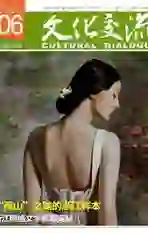近代舟山的海上茶叶之路
2017-06-13王文洪
王文洪

英国植物学家罗伯特·福琼(1812—1880)被人广为传颂的事迹,是从浙江舟山起航,将中国优良的茶种和栽培技术、炒制加工技艺引入印度以及美国,有“植物猎人”之称。
福琼最早受雇于爱丁堡植物园,稍后转至英国皇家园艺学会伦敦植物园。他分别在1843年至1845年、1848年至1851年、1853年至1856年和1861年四次来中国研究采集植物,足迹遍布东南沿海和华北诸省。他将自己在中国的经历写成《华北诸省漫游三年记》(1847)、《中国茶乡之行》(1852)、《两访中国茶乡和喜马拉雅山麓的英国茶园》(1853)、《居住在华人之间》(1857)等游记,其中详细记录了他对中国茶树的调查与移植情况。由于当时舟山是中国对外开放的前沿地区,福琼多次来到舟山本岛定海及离岛普陀山、金塘等进行茶业调查。
对舟山的植物考察
1843年2月26日,福琼受英国皇家园艺学会的派遣,搭乘“鸸鹋号”离开英国,动身前来中国采集植物标本及引进新品种。
经过4个月左右漫长的航行,“鸸鹋号”于7月6日抵达香港。数个月后,福琼抵达舟山。他放眼望去,岛上到处长满“漂亮的绿草、树木以及灌木丛”,闪烁着动人的色彩,与贫瘠的香港形成了鲜明对比。
福琼认为,舟山作为他第一次中国植物采集的大本营是理想的:从这里能方便进入内陆(福琼此次旅行没有离开《南京条约》通商口岸太远),同时岛上耸立的山峦、自然原始的深峡也足够采集各种植物。
我们的香港岛有舟山岛这样的自然条件吗?有舟山岛这样的美景吗?这个岛如果是在我们富有进取心的英国商人手中,用不了几年时间它将会变得何等出色啊。
在这里,福琼找到了许多新种的植物,包括著名的舟山棕榈。如今在没有霜雪的植物园,这种树木十分常见。
在舟山的山坡上以及浙江省的类似自然环境中还种植一种棕榈树,它的苞叶中也可以提取出一种高强度的纤维,特别适合制作绳索与船缆,但在强度和韧度上,比产自马尼拉的麻绳还是要差一些。
福琼将几株舟山棕榈树苗寄给英国植物学者威廉·胡克,其中一株致献给维多利亚女王与阿尔伯特亲王,后来被送到怀特岛的奥斯本暖房种植。这株用以致贺女王32岁生日的棕榈树于1851年5月栽下,至今仍在生长。
我十分高兴地告诉大家,所有这些植物以及其他一些品种,虽然都是舟山地产的,它们现在都已经移栽到英国的花园里了。
1844年3月末,福琼再度从香港起航探访“北方”。这一次,他的落脚地依然在舟山。1844年和1845年夏天,福琼踏访舟山本岛附近岛屿,还数次前往欧洲人禁绝踏足的地方,遇到很多“从未见过英国绅士”的当地人。
岛上居民都很纯朴,很多人活了一辈子,从来就没离开过这个岛。当我出其不意地来到他们的小村子,他们总是感到非常惊奇。
一年多的走访,福琼非常熟悉舟山的土地、物产、植被等情况,他对茶树种植有如下叙述:
到处都栽种着绿色的茶树,每年所产的茶叶,除了一小部分出售到大陆上去——宁波以及邻近的几个乡镇,绝大部分都是当地人自己消费掉了。每户小农或佃农的房前屋后,都有一些房主精心种植的茶树,但看起来他们并不想大规模种茶。
1844年7月的一天,福琼与马克维医生两人,抵达当时被外国人叫做“礼拜岛”的普陀山,对植物品种特别是茶树进行考察。他发现普陀山的和尚喜欢搜罗各种植物,品种非常丰富,很多信徒来岛上朝拜礼佛,献给寺庙的赠品里就包括很多植物品种。
就如所有其他佛寺的周边一样,岛上的树木也都保存得很好。我们看到的主要有枞树、杉树、紫杉、青柏、樟树、乌桕树、橡树以及竹子等。在树林中,我们发现了很多自然生长的山茶,从20到30英尺高不等,茎杆粗细则与其高度相称。可是,这些山茶只有最常见的红色这一种。除此以外,普陀山的植被便与舟山岛上没什么两样了。
1845年12月22日,福琼带着18个装满中国植物的移动温箱从广州出发,于1846年5月6日抵达伦敦。
对舟山的茶叶考察
1848年6月20日,福琼接受英国东印度公司的委托,搭乘半岛东方轮船公司的轮船离开英国南安普敦,8月抵达香港,9月前往上海。
福琼第二次来华的主要任务是,在中国获取优质的茶树品种与制茶工艺,移植到东印度公司开设在喜马拉雅山麓的茶园,同时寻找种茶能手和相应工具。换句话说,印度虽有茶叶种植,但茶叶数量和品质远次于中国。原因很可能是,茶树在長途跋涉之后难以移植存活,茶种出芽率也偏低。在中国有丰富旅行经验的福琼既会乔装打扮,又擅长植物采集栽培,正是此项工作的最佳人选。
福琼发现,中国的主要茶叶产区分布在北纬25度-31度,最好的绿茶产于浙江、安徽,最好的红茶产于福建的武夷山区。福琼首先来到宁波附近的茶区。
要是在宁波附近的茶区采集茶树与种子,那就太容易了。外国人获准访问舟山群岛,比如舟山岛和金塘岛,这两个岛上都种了很多茶叶。
1849年10月的一天,福琼雇了一条船,从宁波驶往舟山,经过当时被英国人叫做“银岛”的金塘岛。虽然邻近舟山本岛,但很少有英国人光顾过。从植物学的角度来看,岛上的群山、峡谷实在是太有意思了。因为这个缘故,福琼经常把他的小船停靠在金塘岛的海湾之中,上岛进行绿茶资源方面的考察。
岛内广泛栽种绿茶茶树,我来这儿的目的就是希望采集到一些茶树种子……我们从山坡上的茶园里采集到了很多茶树种子……每天我们都这样工作,直到我们把几乎所有的茶园都拜访了一遍,采集到一大批茶树种子。
福琼发现,金塘岛的居民就像舟山和宁波的一样,对他很友好,经常热情地用茶水来招待他。
只是,除了善意,他们也拿不出什么好东西来。为了表达善意,他们请我到屋子里坐下,更经常的则是坐在门前的凉棚下,这时他们总忘不了给我递上一杯他们的国饮——茶。在炎热的夏天喝上一杯茶,我不知道还有什么东西比这个更让人消困解乏,哪怕是起到一半的作用也好——我是指像中国人喝的那种又纯又正的茶水,既不加糖也不加牛奶。在消困解乏方面,它比葡萄酒和啤酒都要好很多。茶可以解渴,可以提神,还可以祛除这种气候所引起的种种疾病。
福瓊指出,金塘岛是重要的绿茶产区,种植的茶叶大部分销往外地。
银岛上种植的茶叶比舟山群岛任何别的一座岛屿上的都要多。除去本地人喝掉的,大部分茶叶都销往宁波和乍浦,供那儿的人消费,或是出口到马六甲海峡。尽管都是些好茶叶,可它们并不是按照英、美市场的口味来加工的。
在植物采集中,福琼领会了制茶的方法,发现绿茶与红茶竟然来自同一种茶树,只是茶叶处理和烘干过程有别。
1851年2月16日,福琼带着8名中国制茶工人以及16只温箱离开上海,于3 月15日抵达印度的加尔各答,在当地的茶园指导人们种植茶树与制茶,并将茶种和栽培技术送至喜马拉雅山的茶区。同年8月29日,福琼搭船回到英国。
对舟山海上茶路的见证
福琼第三次来华在1853年。当时正值太平天国农民运动,原定行程受阻,于是他于8月又来到舟山,搜集了大量植物与昆虫标本,据说还有蚊香配方等。福琼第四次来华在1861年,是代表美国政府的。虽然没有来舟山的记载,但他此行采集了更多的茶树种子和茶树苗,并成功地促成了32000株茶树在美国生长。作为鸦片战争后第一个专门派出并且长期在华大规模引种中国经济植物和花卉的学者,福琼的成绩非常突出,其中尤以茶的引种引人瞩目。从这一点来说,1843年至1851年福琼在舟山的茶业调查很值得关注。
海上茶路不仅是中国茶叶的对外输出、贸易之路,而且也是中西文化碰撞、交流之路。福琼对鸦片战争之后舟山的观察和认识,见证了当时舟山在中国的重要地位:是海上茶叶之路的枢纽,是中西文化交流的前沿。1843年11月,当他第一次登上舟山本岛时这样写道:
市场里甚至有很多牛肉出售,这可是违背了中国人的宗教信条的,这些牛肉的标价从八块到十二块不等。他们如此迅速地就适应了我们的生活习惯,给我们提供生活所需,这让我们吃惊不小。商店很快开始供应英式烘烤面包,各式成衣要多少有多少。每个兵营附近都聚集了很多裁缝,海滩附近的商店一大半都是这种裁缝店,一个个都赚得盆满钵满的,尽管他们制售的每一件衣服,价位都很合理。
看看福琼的游记,我们发现舟山在英军占领后的短短一两年内的变化大得让人吃惊,舟山民间对于外界刺激的反应速度快得惊人,迅速出现了牛肉、烘烤面包、英式成衣这些洋玩意。我们再来看看这些舟山的裁缝,他们为了招徕英国人的生意,挂起了英文店招,且看这些店招是多么具有国际视野:
定海的店主们认为取一个英文的店招有助于招徕更多的关注,生意也会更好。走在街道上,看着那些不同的店招,实在让人忍俊不禁。这些店招都出自士兵和水手们给店主的建议。诸如“STULTZ,裁缝,来自伦敦”,“BUCKMASTER,海、陆军指定裁缝”,“DOMINIE DOBBS,杂货店”,很多店招都写明店主是“女王”陛下御用的,其中一个店招上写道“至高至上维多利亚女王陛下、阿尔伯特亲王殿下御用裁缝”。
很显然,定海裁缝们的这种与国际接轨的意识,已经远远超越了当时中国人的传统生活模式。倘若不是与英国人的频繁交往,背后有英国人给他们出谋划策,他们大概创造不出这样一些即使放到今天也不落伍的门头店招。
第一次鸦片战争期间,英军两度占领舟山达五年半时间,1846年7月23日英国人把舟山还给了中国。1850年6月,当福琼再一次登上舟山时,岛上的生活发生了明显的变化。他在游记中写道:
岛上所有的英文标记都被抹掉了,裁缝、鞋匠以及其他一些手艺人,他们那些奇特的英语名字以及店招,在那时候是多么有趣啊,可是现在都消失不见了。一切都完全用中文标识,要是不了解这个地方的历史,没人会相信这儿曾经被英国人占据过一两年。
历史是多面性的。今天,透过福琼的游记,我们看到近代舟山作为海上茶路的重要节点,是那么的鲜活、立体。
Tea Road on the Sea and Zhoushan Archipelago
By Wang Wenhong
Robert Fortune (1812-1880), was a Scottish botanist, plant hunter and traveler, best known for introducing tea plants from China to India and America. Shortly after the British military occupied Dinghai, the biggest island of Zhoushan, he arrived at the archipelago in 1843. In the following years, he took several trips to China. And he wrote books about his adventures in the oriental country, providing details about his quest into tea plants in China. It is noteworthy that Fortune looked into the tea plantations in Zhoushan from 1843 to 1851. If there was a Tea Road on the Sea that connected China to the outside world back then, Zhoushan was a key part of the trade route.
In Zhoushan, Robert Fortune visited tea plantations on Dinghai. He also visited Putuoshan and Jintang, two islands away from Dinghai.
He arrived in Hong Kong on June 1843 and a few months later, he came to Zhoushan. He found the archipelago as an ideal base for him to adventure into the inland of China for his plant-hunting project. During this trip, the botany scholar didnt deviate too far from the port cities engaged in international trade as stipulated in Nanjing Treaty. Moreover, the islands of the archipelago featured mountains and valleys where he certainly did have a good time looking around.
It was in Zhoushan that he did tumble upon some new plant species that he had never seen before, including an indigenous palm tree. Fortune sent some seedlings of the palm tree back to England. One of the palm trees was a birthday gift to the Queen Victoria for her 32nd birthday. Planted in May 1851, the tree still thrives today.
Toward the end of March 1844, Fortune took a northward trip to the mainland of China from Hong Kong. For this adventure, he set up his base in Zhoushan again. In the summers of 1844 and 1845, he visited Dinghai and some islands in close neighborhood.
Islanders planted tea trees around their houses. They sold some tea to Ningbo, a port city on the mainland across the sea. But most of the tea harvested on the islands was consumed by islanders themselves. The islanders didnt mean to produce tea on a large scale for the outside world.
In July 1844, Fortune and a British doctor arrived on Putuoshan, an island of Buddhist temples. He found that Buddhist monks liked to plant trees around temples and that, knowing the monks passion for plants, pilgrims brought various plants from the mainland to the temples. The British botanist searched the local woods on the island and found made a list of what he found there.
June 1848 him come to China again. His major mission was to acquire quality tea seedlings and tea making tools and experienced tea plantation workers for the tea plantations operated by East Indian Company in the Himalayas. Back then, the British company operated some tea plantations in India but the tea produced there was inferior.
Fortune investigated widely and found that the best tea green tea was produced in Zhejiang and Anhui and the best black tea was produced in Wuyi Mountains in Fujian.
During this trip, Fortune first visited tea plantations near Ningbo, where he collected tea plants and seeds. In October 1849, he hired a ship and traveled to Jintang Island. Though it wasnt far from Dinghai, few British had ever visited Jintang. Botanically, the island was very interesting. He spent days collecting seeds around tea plantations on the undulating hill slopes. He found islanders on Jintang were hospitable. Local people warmly invited him to their houses and treated him with a cup of tea. He found the beverage good to relieve him of fatigue in the hot summer days. Fortune found that the island exported part of its tea products to Malacca in the Southeast Asia. He also found that the black tea and green tea was made with tealeaves from the same tea bushes and that the secret of making different tea products was in the processing.
On February 1851, Fortune left Shanghai for Calcutta, India with 8 Chinese tea makers and 16 cases of tea plants. They arrived on March 15. The Chinese workers brought the tea seeds and planting techniques to the tea plantations in the Himalayas.
His third trip to China was in 1853. His adventure plan had to change as the Taiping Rebellion was raging on. In August he came to Zhoushan again. He collected a great number of botanic and insect specimens.
In 1861, Fortune came to China again, commissioned by the government of the United States to gather tea plants and tea plant seeds. Thanks to his endeavor, 32,000 tea plants successfully put their roots down in American and grew. There is no record whether he came to Zhoushan on this trip.
